巻号一覧

8 巻 (1974 - 1975)
- 16 号 p. 1-
- 15 号 p. 1-
8 巻, 15 号
選択された号の論文の6件中1~6を表示しています
- |<
- <
- 1
- >
- >|
-
渡辺 忠彦, 小林 和夫, 徳広 祐之輔, 竹内 正俊1974 年8 巻15 号 p. 1-9
発行日: 1974/09/30
公開日: 2010/03/12
ジャーナル フリーThis paper describes fundamental experiment on the electrical discharge machining with wire electrode. A thick glass plate could be ground and cut by the electric arcs generated along the contact line between the glass plate and the wire electrode in an electrolyte. In the first place under the application of alternating current, a relation between temperature of the electrolyte and the cutting rate was examined. The result showed that there was a transition temperature at about 60°C. Secondly for the purpose of clarifying the transition phenomenon, the relation between temperature of the electrolyte and the cutting rate was investigated in the each case of the application of half-wave rectified voltage and that of full-wave rectified one to the wire electrode. Furthermore the mechanism of machining was made clear by using microscope to consider the machining surface. The main results of the second experiment are as follows:
1. When full-wave rectified negative voltage, half-wave rectified positive or negative Voltage was applied to the wire electrode, each cutting rate was almost constant over 60°C. The cutting rate under full-wave rectified negative voltage was the largest.
2. When full-wave rectified negative voltage of 64V was applied to the wire electrode, the cutting rate showed rapid increase over the range from 52°C to 73°C. This rapid increase is due to the reason that the electric current and the discharging period change little by little in the range from 52°C to 73°C with increase of the temperature of the electrolyte.
3. The cutting rate by use of alternating current increased in the range from 60°C to 73°C, because the electric current and the discharging period under the positive voltage might be changed with the electrolyte temperature. In order to get the rapid increase of cutting rate, short pausing period of disharge must be chosen as pausing period under alternating voltage or positive full-wave rectified voltage.抄録全体を表示PDF形式でダウンロード (6449K) -
土屋 政光, 木下 夏夫1974 年8 巻15 号 p. 10-19
発行日: 1974/09/30
公開日: 2010/03/12
ジャーナル フリーPDF形式でダウンロード (6715K) -
駒井 征一, 小峰 進1974 年8 巻15 号 p. 20-28
発行日: 1974/09/30
公開日: 2010/03/12
ジャーナル フリーPDF形式でダウンロード (4551K) -
荒井 伸治, 葉石 雄一郎, 高鷲 民生1974 年8 巻15 号 p. 29-43
発行日: 1974/09/30
公開日: 2010/03/12
ジャーナル フリーPDF形式でダウンロード (9361K) -
元木 幹雄, 小野 雅章, 上出 諭吉1974 年8 巻15 号 p. 44-53
発行日: 1974/09/30
公開日: 2010/03/12
ジャーナル フリーPDF形式でダウンロード (8842K) -
清宮 紘一, 伊東 祐光1974 年8 巻15 号 p. 54-66
発行日: 1974/09/30
公開日: 2010/03/12
ジャーナル フリーThis paper presents general concept of control in ECM, leading to the development of optimal and adaptive control of ECM process which seems to be indispensable for further development of ECM.
A control system was developed for ECM with a view to utilizing in optimal or adaptive control. A mini-computer was employed as a central performance unit to memorize a control program, to process data, to calculate, to pass on-line judgement, to share adequate pulse train with the stepping motor, and to instruct power source in its voltage. Specific resistance of electrolyte and gap voltage are sampled to calculate an adequate feed rate to keeping an aimed gap. Some experiments were performed to apply this system to optimal control in which taper of machined holes was controlled according to a program.抄録全体を表示PDF形式でダウンロード (1422K)
- |<
- <
- 1
- >
- >|